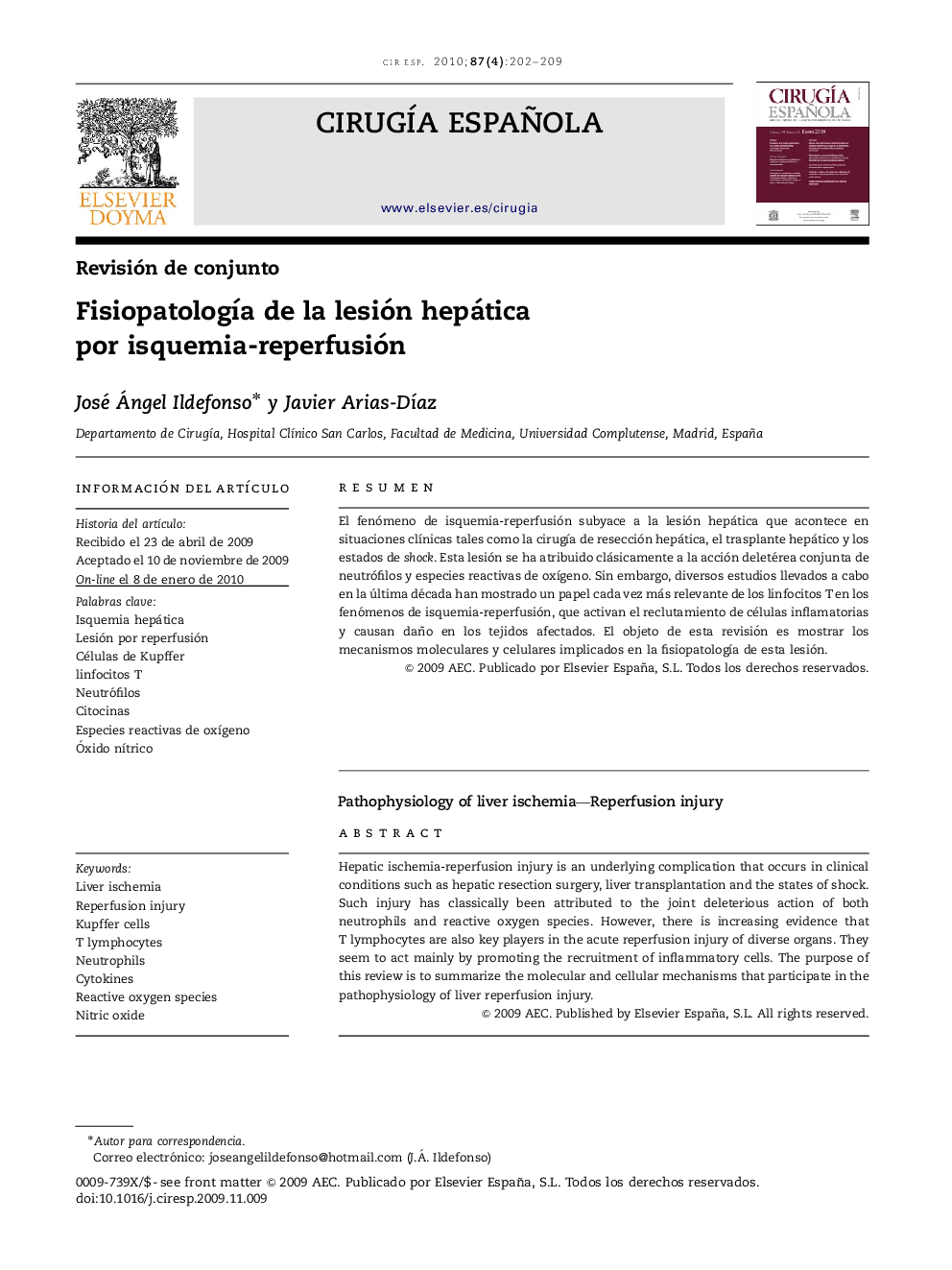| Article ID | Journal | Published Year | Pages | File Type |
|---|---|---|---|---|
| 4253129 | Cirugía Española | 2010 | 8 Pages |
ResumenEl fenómeno de isquemia-reperfusión subyace a la lesión hepática que acontece en situaciones clínicas tales como la cirugía de resección hepática, el trasplante hepático y los estados de shock. Esta lesión se ha atribuido clásicamente a la acción deletérea conjunta de neutrófilos y especies reactivas de oxígeno. Sin embargo, diversos estudios llevados a cabo en la última década han mostrado un papel cada vez más relevante de los linfocitos T en los fenómenos de isquemia-reperfusión, que activan el reclutamiento de células inflamatorias y causan daño en los tejidos afectados. El objeto de esta revisión es mostrar los mecanismos moleculares y celulares implicados en la fisiopatología de esta lesión.
Hepatic ischemia-reperfusion injury is an underlying complication that occurs in clinical conditions such as hepatic resection surgery, liver transplantation and the states of shock. Such injury has classically been attributed to the joint deleterious action of both neutrophils and reactive oxygen species. However, there is increasing evidence that T lymphocytes are also key players in the acute reperfusion injury of diverse organs. They seem to act mainly by promoting the recruitment of inflammatory cells. The purpose of this review is to summarize the molecular and cellular mechanisms that participate in the pathophysiology of liver reperfusion injury.
